ATI RN Pharmacology 2019 Updated 2024
Total Questions : 71
Showing 25 questions, Sign in for moreA nurse is reviewing a client's medical record before administering acetaminophen 650 mg PO every 6 hr.
Which of the following findings indicates a need for the nurse to notify the provider?
Explanation
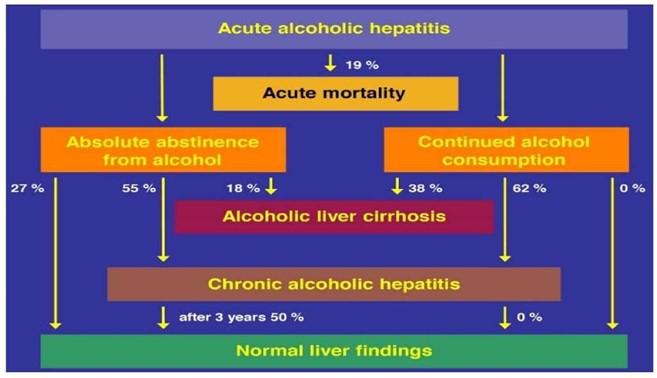 Acetaminophen is metabolized by the liver and can cause liver damage when taken in large doses or for a prolonged period of time.
Acetaminophen is metabolized by the liver and can cause liver damage when taken in large doses or for a prolonged period of time.
Someone with an alcohol use disorder may already have a compromised liver, and combining acetaminophen with more alcohol can worsen the risk of irreparable damage.
Choice A is wrong because Hypothyroidism, is not a contraindication for acetaminophen use.
Choice C is wrong because Recurrent headaches, is not a contraindication for acetaminophen use.
Choice D is wrong because BP 92/60 mm Hg, is not a contraindication for acetaminophen use.
A nurse is assessing a client who has hypermagnesemia.
Which of the following medications should the nurse prepare to administer?
Explanation
An intravenous (IV) calcium supply can help calm some symptoms of hypermagnesemia.
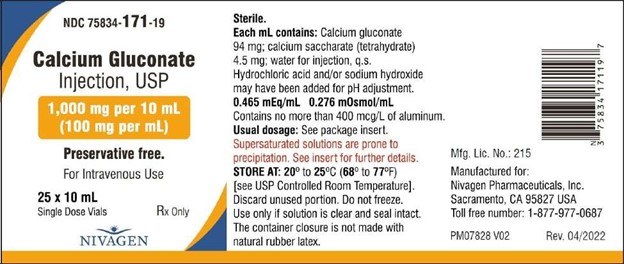
Calcium helps normalize your heartbeat and breathing.
Choice A is wrong because Protamine sulfate, is not used to treat hypermagnesemia.
Choice B is wrong because Flumazenil, is not used to treat hypermagnesemia.
Choice C is wrong because Acetylcysteine, is not used to treat hypermagnesemia.
A nurse is reviewing the medication list of a client who has erectile dysfunction and is requesting a prescription for sildenafil.
The nurse should identify that which of the following medications is a contraindication for receiving this medication?
Explanation
Using sildenafil together with nitroglycerin is not recommended.
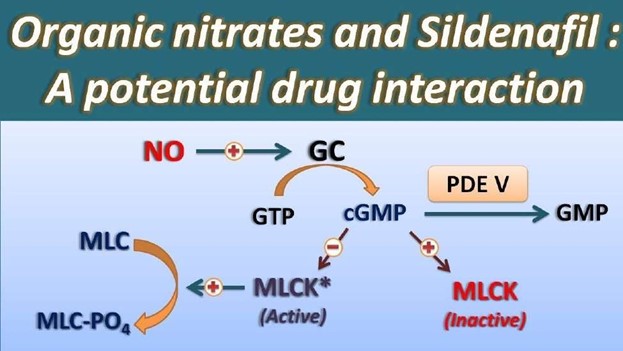
Combining these medications may cause blood pressure to fall excessively, which can lead to cardiovascular collapse.
Choice A is wrong because Albuterol, is not a contraindication for receiving sildenafil.
Choice B is wrong because Indomethacin, is not a contraindication for receiving sildenafil.
Choice D is wrong because Furosemide, is not a contraindication for receiving sildenafil.
A nurse is completing medication reconciliation for a client prior to their transfer to a rehabilitation facility.
Which of the following actions should the nurse take?
Explanation
Compare the current and newly prescribed medications and note any discrepancies.
During medication reconciliation, the nurse should compare the client’s current medication orders with the medications that the client has been taking and note any discrepancies.
Choice A is wrong because Reviewing the adverse effects of the medication with the client, is not part of medication reconciliation.
Choice C is wrong because Sending a list of the prescribed medications to the client’s pharmacy, is not part of medication reconciliation.
Choice D is wrong because Including the medications the client received during surgery on the client’s medication list, is not part of medication reconciliation.
A nurse is preparing to administer medications to a client and discovers a medication error.
The nurse should recognize that which of the following staff members is responsible for completing an incident report?
Explanation
The nurse who identifies the error is responsible for completing an incident report.

Initial reports often come from the frontline personnel directly involved in an event or the actions leading up to it.
Choice A is wrong because the charge nurse is not necessarily responsible for completing an incident report.
Choice B is wrong because the quality improvement committee is not responsible for completing an incident report.
Choice D is wrong because the nurse who caused the error may not be aware of it and therefore may not be responsible for completing an incident report.
A nurse is teaching a client who is to start taking clopidogrel.
The nurse should instruct the client to monitor and report which of the following adverse effects of the medication?
Explanation
The nurse should instruct the client to monitor and report bruising as an adverse effect of taking clopidogrel.

Clopidogrel increases the risk of bleeding, which can be severe or life- threatening.
Choice A is wrong because blurred vision is not a common adverse effect of clopidogrel.
Choice B is wrong because constipation is not a common adverse effect of clopidogrel.
Choice C is wrong because weight loss is not a common adverse effect of clopidogrel.
A nurse is providing teaching to a client who has a new prescription for paroxetine.
The nurse should instruct the client to monitor for which of the following adverse effects?
Explanation
The nurse should instruct the client to monitor for drowsiness as an adverse effect of taking paroxetine.
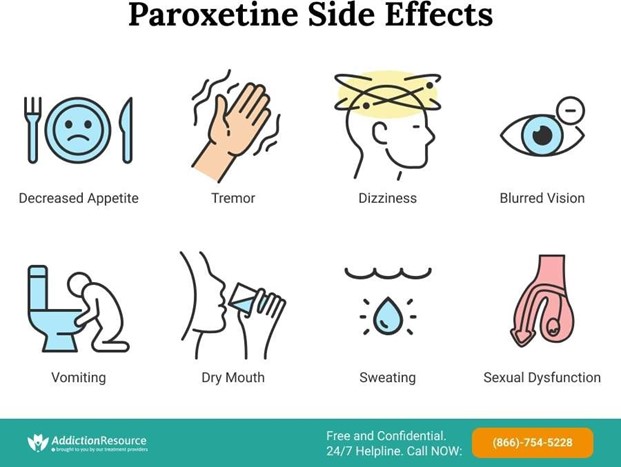
Choice A is wrong because peripheral edema is not a common adverse effect of paroxetine.
Choice B is wrong because alopecia is not a common adverse effect of paroxetine.
Choice C is wrong because tinnitus is not a common adverse effect of paroxetine.
A nurse is interviewing a client who was newly admitted prior to administering medications.
The client tells the nurse, "I forgot to tell the doctor I take albuterol for asthma."
For which of the following medications should the nurse withhold the dose and notify the provider?
Explanation
The nurse should withhold the dose of propranolol and notify the provider.
Using propranolol together with albuterol may reduce the benefits of both medications, since they have opposing effects in the body.
In addition, propranolol can sometimes cause narrowing of the airways, which may worsen breathing problems or trigger severe asthmatic attacks.
Choice B is wrong because there is no known interaction between albuterol and isosorbide mononitrate.
Choice C is wrong because there is no known interaction between albuterol and pantoprazole.
Choice D is wrong because there is no known interaction between albuterol and montelukast.
A nurse realizes that they failed to administer a medication that was due 4 hr ago to a client.
Which of the following actions should the nurse take first?
Explanation
The first action the nurse should take is to assess the client for adverse reactions.
It is important to ensure the client’s safety and well-being before taking any further actions.
Choice A is wrong because filing an incident report is not the first action the nurse should take.
Choice B is wrong because determining factors that led to the omission is not the first action the nurse should take.
Choice D is wrong because reporting the missed dosage to the client’s provider is not the first action the nurse should take.
A nurse is administering ferrous sulfate elixir to a client who has iron deficiency anemia.
Which of the following actions should the nurse take?
Explanation
Administer the medication through a straw.
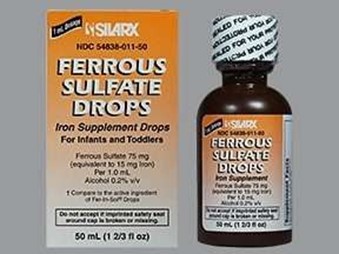
This is because ferrous sulfate elixir can stain the teeth, so using a straw can help prevent this from happening.
Choice A is wrong because milk can interfere with the absorption of iron.
Choice B is wrong because caffeine can also interfere with iron absorption.
Choice D is wrong because antacids can reduce the absorption of iron and should be avoided within 2 hours of taking ferrous sulfate.
A nurse is caring for a client who is receiving ceftriaxone intravenously.
Which of the following manifestations should the nurse identify as an allergic reaction?
Explanation
This is because hypotension (low blood pressure) can be a sign of anaphylaxis, which is a severe allergic reaction that can occur with ceftriaxone.
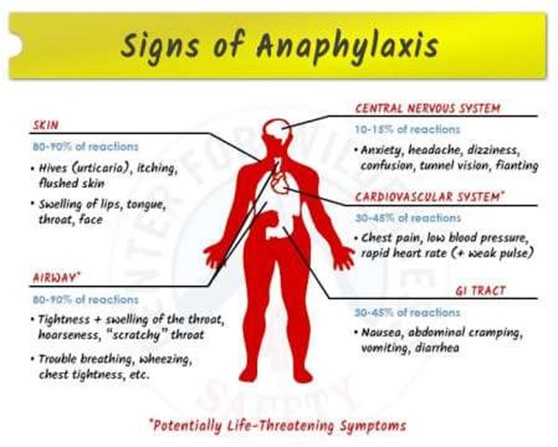
Choice A is wrong because polyuria (increased urination) is not a common sign of an allergic reaction to ceftriaxone.
Choice C is wrong because nausea can be a side effect of ceftriaxone but is not specific to an allergic reaction.
Choice D is wrong because bradycardia (slow heart rate) is not a common sign of an allergic reaction to ceftriaxone.
A nurse is reviewing agency protocol prior to administering epoetin alfa to a client who has chronic kidney disease.
Which of the following actions should the nurse plan to take?
Explanation
Discard the vial of medication if the solution is cloudy.
This is because epoetin alfa should not be used if it has been frozen or if it has changed color or has particles in it.
Choice B is wrong because the vial should not be shaken before use.
Choice C is wrong because epoetin alfa should not be diluted with sterile water or any other liquid.
Choice D is wrong because epoetin alfa should not be frozen and therefore does not need to be thawed before administration.
A nurse is caring for a client who has diabetes mellitus and is taking pioglitazone.
The nurse should plan to monitor the client for which of the following adverse effects?
Explanation
This is because pioglitazone can cause fluid retention and edema.
Choice B is wrong because tinnitus (ringing in the ears) is not a common adverse effect of pioglitazone.
Choice C is wrong because insomnia (difficulty sleeping) is not a common adverse effect of pioglitazone.
Choice D is wrong because orthostatic hypotension (a drop in blood pressure when standing up) is not a common adverse effect of pioglitazone.
A nurse is administering naloxone to a client who has developed an adverse reaction to morphine.
The nurse should identify which of the following findings as a therapeutic effect of naloxone?
Explanation
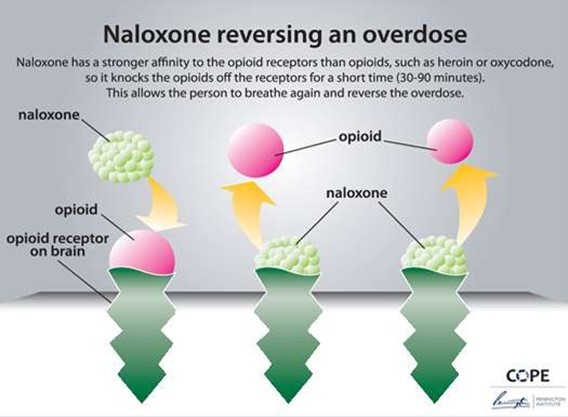
This is because naloxone is an opioid antagonist that rapidly reverses an opioid overdose by attaching to opioid receptors and reversing and blocking the effects of other opioids.
It can quickly restore normal breathing to a person if their breathing has slowed or stopped because of an opioid overdose.
Choice A is wrong because decreased nausea is not a therapeutic effect of naloxone.
Choice C is wrong because decreased blood pressure is not a therapeutic effect of naloxone.
Choice D is wrong because increased pain relief is not a therapeutic effect of naloxone.
A nurse is teaching a client who has multiple allergies about using an epinephrine auto-injector.
Which of the following instructions should the nurse include?
Explanation
The nurse should instruct the client to administer the medication through clothing if necessary.

In an emergency, an epinephrine auto-injector can be given through clothing.
Choice A is wrong because massaging the site after injection is not mentioned as something to avoid in the instructions for using an epinephrine auto-injector.
Choice B is wrong because the medication should be injected into the outer thigh, not the abdomen.
Choice D is wrong because aspiration prior to administration of the medication is not mentioned as a necessary step in the instructions for using an epinephrine auto-injector.
A nurse is reviewing the medical history of a client prior to medication administration and notes a history of an anaphylactic reaction to penicillin.
The nurse should identify that which of the following medications is contraindicated for this client?
Explanation
Ceftriaxone is contraindicated for this client because it is a cephalosporin antibiotic, which has a similar structure to penicillin and can cause cross-reactivity in individuals with a penicillin allergy.
Choice A is wrong because Vancomycin is not a beta-lactam antibiotic and does not have cross-reactivity with penicillin.
Choice B is wrong because Clarithromycin is a macrolide antibiotic and does not have cross-reactivity with penicillin.
Choice C is wrong because Metronidazole is a nitroimidazole antibiotic and does not have cross-reactivity with penicillin.
A nurse is caring for a client who has major depression and a new prescription for citalopram.
Which of the following adverse effects is the priority for the nurse to report to the provider?
Explanation
Confusion is the priority for the nurse to report to the provider because it can be a sign of a serious side effect of citalopram.
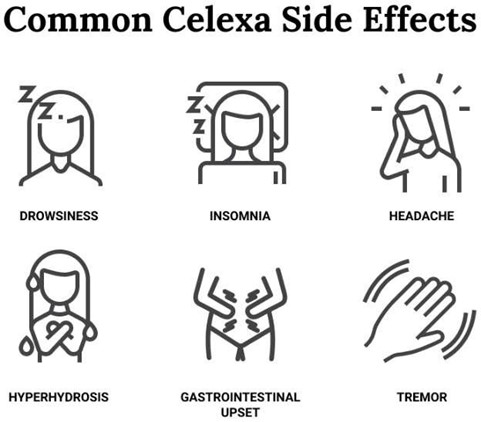
Choice A is wrong because weight loss is not mentioned as a serious side effect of citalopram.
Choice B is wrong because bruxism is not mentioned as a serious side effect of citalopram.
Choice C is wrong because insomnia is a common side effect of citalopram but not considered a serious side effect that requires immediate medical attention.
A nurse is planning care for a client who has a prescription for erythromycin lactobionate IV bolus.
Which of the following actions should the nurse include in the plan of care?
Explanation
The nurse should monitor the client for hearing loss because it is a potential adverse effect of erythromycin.
Choice B is wrong because a high-fiber diet to prevent constipation is not mentioned as a necessary action when administering erythromycin lactobionate IV bolus.
Choice C is wrong because erythromycin lactobionate IV bolus should not be administered over 10 min; bolus injection (IV push) is contraindicated.
Choice D is wrong because erythromycin lactobionate should not be reconstituted with a 5% dextrose solution; it should be reconstituted with sterile water for injection.
A nurse is preparing to administer amphotericin B lipid complex via intermittent IV bolus to a client who has infective endocarditis.
Which of the following actions should the nurse take?
Explanation
The nurse should administer the medication over 2 hr because amphotericin B lipid complex should be infused slowly intravenously.
Choice B is wrong because priming the tubing with 0.9% sodium chloride is not mentioned as a necessary action when administering amphotericin B lipid complex via intermittent IV bolus.
Choice C is wrong because discarding the medication if it is yellow is not mentioned as a necessary action when administering amphotericin B lipid complex via intermittent IV bolus.
Choice D is wrong because a gravity flow set is not mentioned as a necessary action when administering amphotericin B lipid complex via intermittent IV bolus.
A nurse is assessing a client who has Graves' disease and is taking methimazole.
Which of the following findings indicates the client needs a lower dose of the medication?
Explanation
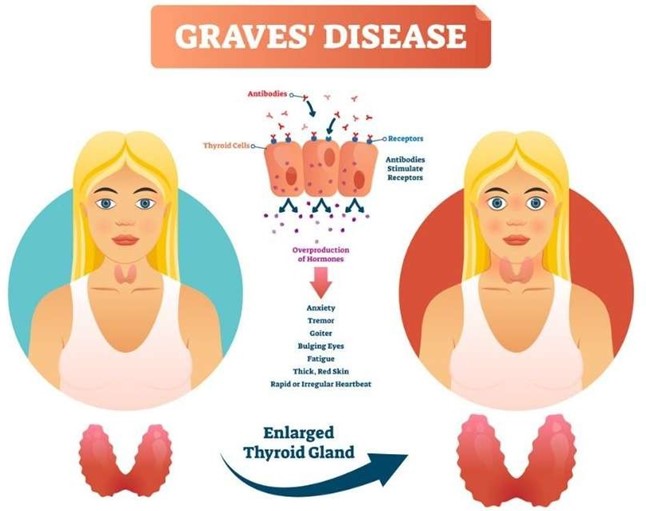
Methimazole is a medication used to treat hyperthyroidism, a condition where the thyroid gland produces too much thyroid hormone.
Bradycardia, or a slow heart rate, can be a sign that the client’s thyroid hormone levels have become too low, indicating that the dose of methimazole may need to be decreased.
Choice A is wrong because Exophthalmos, is not an indication for a lower dose of methimazole as it is a symptom of Graves’ disease itself and not related to the medication.
Choice B is wrong because Diaphoresis, or excessive sweating, is also not an indication for a lower dose of methimazole as it can be a symptom of hyperthyroidism.
Choice D is wrong because Weight loss, is also not an indication for a lower dose of methimazole as it can be a symptom of hyperthyroidism.
A nurse is assessing a client who is taking an osmotic laxative.
Which of the following findings should the nurse identify as an indication of fluid volume deficit?
Explanation
Osmotic laxatives work by drawing water into the intestines, which can lead to fluid loss and dehydration if not enough fluids are consumed.
Oliguria, or decreased urine output, can be a sign of fluid volume deficit and dehydration.
Choice A is wrong because Weight gain, is not an indication of fluid volume deficit as weight loss is more commonly associated with dehydration.
Choice C is wrong because Headaches, can be a symptom of dehydration but is not specific to fluid volume deficit.
Choice D is wrong because Nausea, can also be a symptom of dehydration but is not specific to fluid volume deficit.
A nurse is planning to administer a controlled substance to a client who is experiencing pain.
Which of the following actions should the nurse plan to take first?
Explanation
Remove the medication from the medication dispensing cabinet.
Before administering a controlled substance to a client, the nurse should first remove the medication from the medication dispensing cabinet.
Choice A is wrong because Document the administration of the medication, is an important step but it should be done after the medication has been administered.
Choice B is wrong because Identify the client using two identifiers, is also an important step but it should be done after the medication has been removed from the cabinet and before administering it to the client.
Choice C is wrong because Compare the amount of medication available to the inventory record, is also an important step but it should be done after removing the medication from the cabinet and before administering it to the client.
A nurse is caring for a client who has a prescription for total parental nutrition (TPN).
Which of the following routes of administration should the nurse use?
Explanation
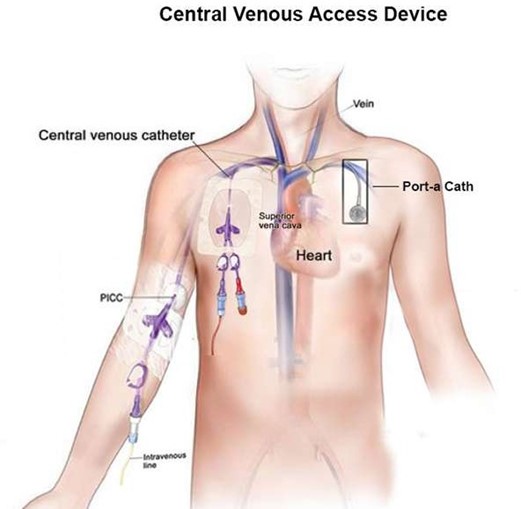
Total parenteral nutrition (TPN) is a highly concentrated solution that provides nutrients to the body intravenously.
It is typically administered through a central venous access device, such as a central venous catheter or a peripherally inserted central catheter (PICC), because it can irritate the walls of smaller veins.
Choice B is wrong because Midline catheter, is not an appropriate route for TPN administration because it is not a central venous access device.
Choice C is wrong because Subcutaneous, is not an appropriate route for TPN administration because it is not given intravenously.
Choice D is wrong because Intraosseous, is not an appropriate route for TPN administration because it is typically used in emergency situations when intravenous access cannot be obtained.
A nurse recently administered filgrastim intravenously to a client who has cancer and is receiving cytotoxic chemotherapy.
For which of the following data, discovered after the medication was administered, should the nurse file an incident report?
Explanation
Filgrastim is a medication that stimulates the production of white blood cells in the bone marrow. It is used to prevent or treat neutropenia (low white blood cell count) caused by chemotherapy, bone marrow transplant, or other conditions.
According to the guidelines for filgrastim administration, the nurse should file an incident report for the following data:
d. The nurse flushed the client’s IV line with dextrose 5% in water before and after the medication was administered.
This is because filgrastim is incompatible with dextrose solutions and should not be mixed or diluted with them. Filgrastim should only be administered in normal saline (0.9% sodium chloride) solution. Flushing the IV line with dextrose 5% in water could reduce the effectiveness of filgrastim or cause adverse reactions.
The other data are not reasons to file an incident report, as they are either within the normal range or not related to filgrastim administration.
a. The client had chemotherapy 12 hr before the medication was administered.
This is not a problem, as filgrastim can be given at any time during the chemotherapy cycle, as long as it is not given within 24 hours before or after the chemotherapy dose.
b. The medication vial sat at room temperature for 2 hr before it was administered.
This is acceptable, as filgrastim can be left out at room temperature for up to 24 hours, as long as it is not exposed to direct sunlight or shaken.
c. The client’s absolute neutrophil count was 2,500/mm³ before the medication was administered.
This is within the normal range, as the normal absolute neutrophil count is between 1,500 and 8,000/mm³. Filgrastim can be given to prevent neutropenia or to increase the white blood cell count before apheresis (a procedure to collect stem cells from the blood)
A client who has Graves' disease is prescribed methimazole.
Which of the following effects should the nurse expect to see after the client has taken the medication for 2 months?
Explanation
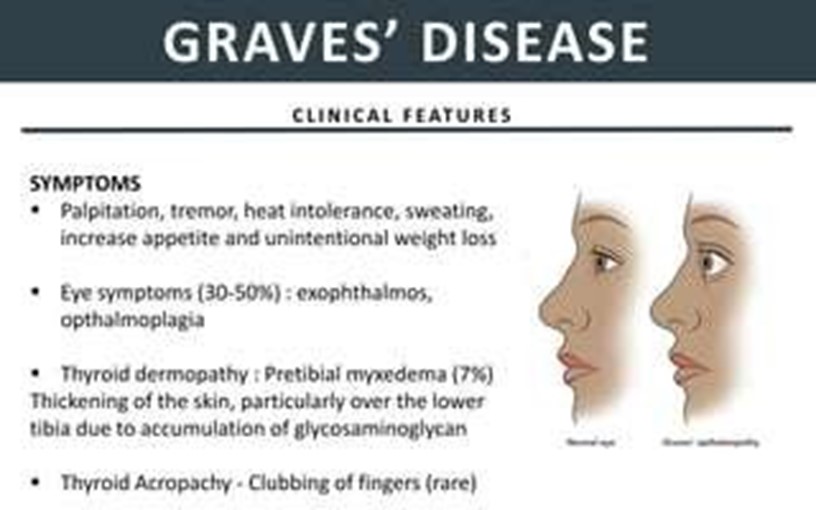
Methimazole is an antithyroid medication that controls the overproduction of thyroid hormone in Graves’ disease.
One of the symptoms of Graves’ disease is difficulty sleeping due to the overproduction of thyroid hormone.
After taking methimazole for 2 months, the client’s thyroid hormone levels should decrease, leading to an improvement in sleep.
Choice A is wrong because weight loss is a symptom of Graves’ disease due to the overproduction of thyroid hormone.
Methimazole controls the overproduction of thyroid hormone and may lead to weight gain.
Choice B is wrong because warmer skin is a symptom of Graves’ disease due to the overproduction of thyroid hormone.
Methimazole controls the overproduction of thyroid hormone and may lead to cooler skin.
Choice C is wrong because an increase in pulse rate is a symptom of Graves’ disease due to the overproduction of thyroid hormone.
Methimazole controls the overproduction of thyroid hormone and may lead to a decrease in pulse rate.
Sign Up or Login to view all the 71 Questions on this Exam
Join over 100,000+ nursing students using Nursingprepexams’s science-backend flashcards, practice tests and expert solutions to improve their grades and reach their goals.
Sign Up Now

